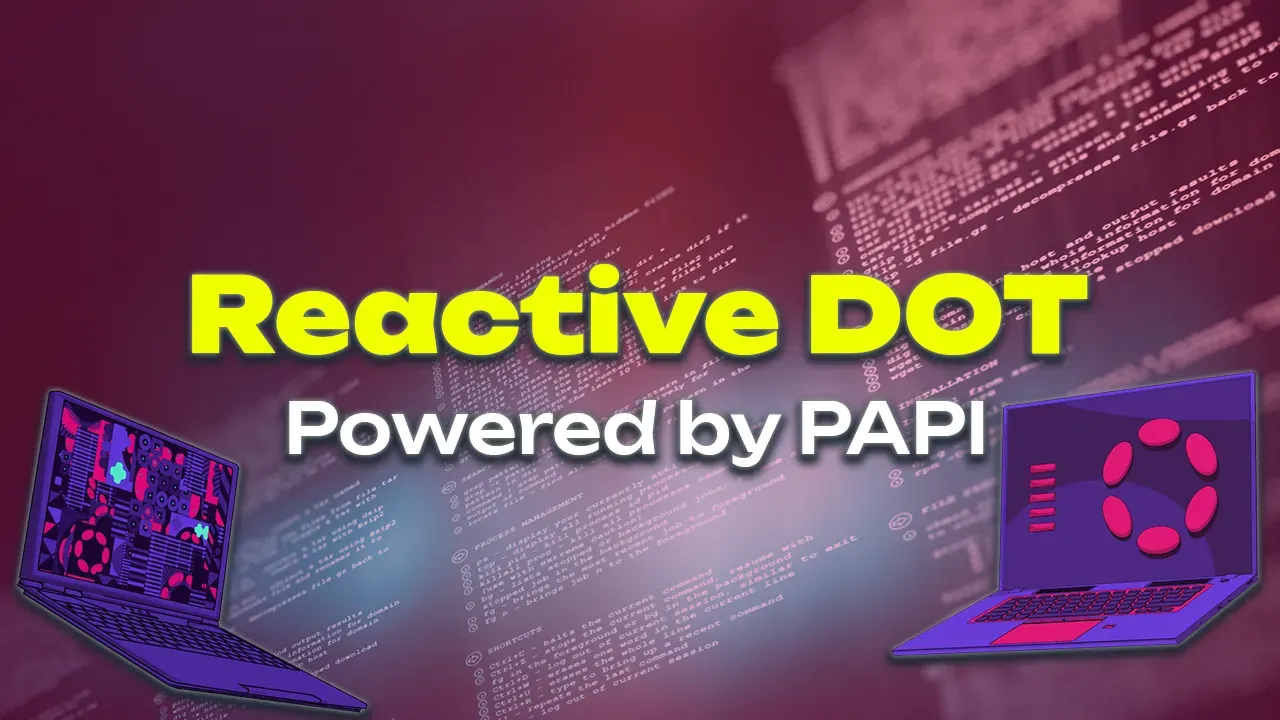Exploring Reactive DOT Tool for Polkadot Development

Reactive DOT is one such tool that has been gaining traction within the Polkadot ecosystem. Supported by the successful proposals #812 and #948 and created by Tiến Nguyễn Khắc, Reactive DOT introduces a new approach to handling state management and front-end interfaces in Polkadot-based applications. This article provides an in-depth look at Reactive DOT, its features, and how it can be leveraged by developers to enhance their projects.
What is Reactive DOT?
Reactive DOT is a framework designed to streamline the development process for dApps on the Polkadot network. By focusing on reactive programming principles, Reactive DOT offers a more efficient way to manage state and build user interfaces that are both dynamic and responsive. This tool is particularly valuable for developers looking to create applications that require real-time updates and seamless interactions with the Polkadot network.
Key Features of Reactive DOT
Reactive DOT comes packed with features that make it an invaluable resource for developers:
- Asynchronous State Management: Reactive DOT allows developers to handle state changes asynchronously, ensuring that applications remain responsive even during high transaction volumes.
- Real-Time Data Handling: The framework is built to manage real-time data streams, making it ideal for applications that require instant updates and live data.
- Simplified Front-End Integration: With its focus on front-end interfaces, Reactive DOT simplifies the process of building user interfaces that are both intuitive and efficient.
- Compatibility with Polkadot: Reactive DOT is fully integrated with the Polkadot network, providing developers with the tools they need to build advanced dApps that leverage Polkadot’s capabilities.
The Role of PAPI (Polkadot API) in Reactive DOT
At the core of Reactive DOT’s functionality is PAPI (Polkadot API), which serves as the engine driving the interaction with the Polkadot network. PAPI provides the necessary APIs to facilitate a wide range of operations, from basic node interactions to complex governance and staking functions. By integrating PAPI with Reactive DOT, developers can create applications that are not only powerful but also future-ready.
Real-World Application: The DOT Console
To showcase the capabilities of Reactive DOT, a developer console application, known as DOT Console, was developed by Tiến Nguyễn Khắc, the creator of Reactive DOT. This console serves as a practical demonstration of how Reactive DOT can be used in real-world scenarios to create efficient and scalable dApps.
Features of the DOT Console
The DOT Console application highlights several key features of Reactive DOT, including:
- Minimalistic Statistics & Blocks Viewer: Provides users with a simple yet effective interface for viewing blockchain statistics and blocks in real-time.
- Wallet Connection Management: Allows users to connect their wallets seamlessly, leveraging the DOT Connect UI library for managing wallet interactions.
- Storage, Constants & Runtime APIs Querying: Enables developers to query various blockchain elements, such as storage, constants, and runtime APIs, directly from the console.
- Extrinsic Builder: Offers a tool for constructing extrinsics, ranging from simple remarks to complex cross-chain messages (XCM).
The Value of Dogfooding
In the development of the DOT Console, the concept of “dogfooding” was employed—using one’s own product to validate its effectiveness. By building a real-world application with Reactive DOT and PAPI, the developer was able to test the performance, efficacy, and developer ergonomics of these tools in a practical setting. This approach not only demonstrated the capabilities of Reactive DOT but also provided valuable insights into how it can be further refined and optimized.
The Future of Polkadot Development with Reactive DOT
Reactive DOT represents an advancement in the tools available to Polkadot developers. By offering a framework that prioritizes real-time data handling, asynchronous state management, and seamless front-end integration, Reactive DOT positions itself as a go-to resource for building next-generation dApps on the Polkadot network.
As developers begin to explore and implement Reactive DOT in their projects, the feedback and experiences they share will be crucial in shaping the future of this tool. Whether you’re a seasoned Polkadot developer or just starting, Reactive DOT, combined with PAPI, offers the potential to revolutionize how you approach dApp development.
For those not yet ready to dive into Reactive DOT, it’s still highly recommended to utilize PAPI for all future Polkadot projects. Migrating from older frameworks like PJS to PAPI can provide significant performance improvements and future-proof your applications.
In conclusion, Reactive DOT, supported by PAPI, is set to play a pivotal role in the evolution of Polkadot development, offering developers the tools they need to create more efficient, scalable, and responsive applications within this rapidly growing ecosystem.
- Follow the discussion at the Polkadot Forum.

